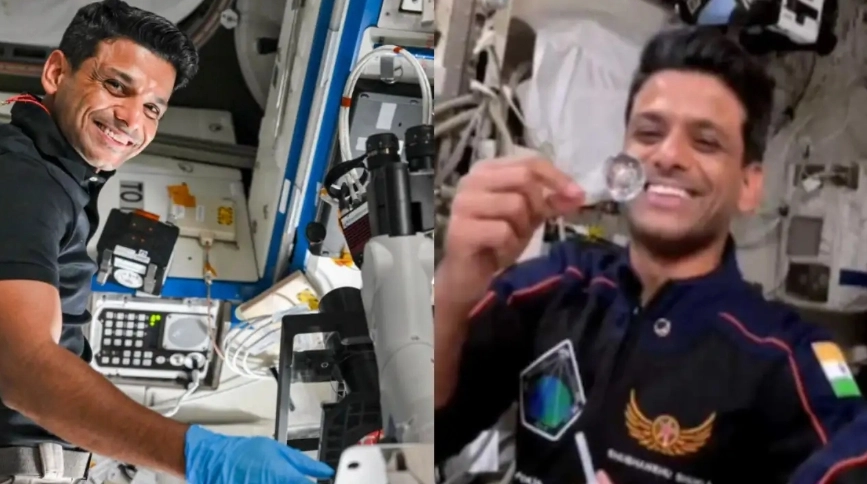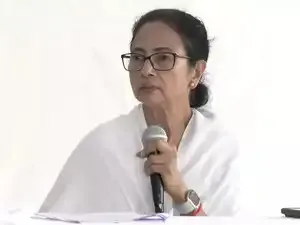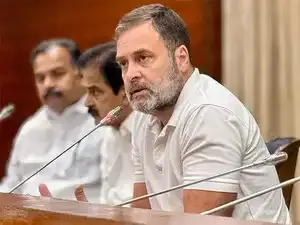Methi In Microgravity? Breakthrough Experiments by Shubhanshu Shukla in Space - Explained
timesnownews | July 16, 2025 10:01 AM CST

Indian astronaut Shubhanshu Shukla and his fellow crewmembers conducted over 60 scientific experiments during their 18-day stay aboard the International Space Station (ISS) as part of the Axiom-4 mission. This milestone mission not only marked India’s first human presence on the ISS but also focused heavily on microgravity research and technology demonstrations.
But what exactly were these experiments?
The Axiom-4 crew conducted experiments on medicine, agriculture and space exploration. The main focus was to experiment with how it is to grow food, manage water supply in space.
Experiments
Shubhanshu Shukla, according to the Indian Space Research Organisation (ISRO), conducted experiments including studies on microalgae cultivation, seed germination, muscle regeneration, tardigrades (tiny, highly resilient microorganisms), and how humans interact with screens in zero-gravity environments.
1. Ability to Survive: Shubhanshu Shukla’s experiments involved studying the growth, resilience and effects of space travel on an Indian strain of tardigrades, microscopic organisms renowned for their remarkable ability to survive in extreme environments.
2. Effects on Muscles in Space: Shubhanshu Shukla studied how space conditions affect muscle tissue development in humans, a process known as myogenesis. While the research aims to understand muscle loss in microgravity, it could also lead to potential treatments for muscle-related conditions on Earth.
3. Crop Seeds: Shubhanshu Shukla examined how "moong" and 'methi" seeds would sprout in petri dishes and later stored them in a freezer aboard the International Space Station (ISS). The experiment was conducted to study how microgravity influences their development.
4. Oxygen Production: Shubhanshu Shukla (Shux) further experimented on two strains of cyanobacteria, aquatic-photosynthetic organisms believed to have been the first on Earth to produce oxygen. The experiment was conducted to let researchers examine microgravity influences on them, to check if these can be part of spacecraft recycling systems since they grow fast and efficiently recycle carbon and nitrogen.
5. Growing Food & Fuel: Shubhanshu Shukla led another key experiment focused on microalgae - tiny organisms known for their potential as sources of food and fuel. The study explored how microgravity affects their growth, metabolism, and genetic activity, comparing the results to algae cultivated under Earth’s conditions.
6. Screentime: Shubhanshu Shukla also carried out ISRO’s important study titled Voyager Display, which examined the effects of using computer screens in zero gravity. While screen time is a topic of ongoing debate across fields from life sciences to social sciences, this experiment focused specifically on how astronauts interact with digital displays in space. The findings are expected to guide the design of future onboard systems and gadgets by revealing how much cognitive load or stress such interactions may cause in microgravity.
7. Brainstoo Computers: Shukla, along with fellow astronaut Slawosz Uznanski, took part in several groundbreaking experiments, one of which involved performing mental calculations while in a state of deep focus. The goal was to explore the possibility of direct brain-to-computer interaction, using thoughts alone. According to the Polish neurotechnology firm behind the study, this marked the first time in history that humans established direct brain communication with a computer in space.
8. Water Experiment: Shubhanshu Shukla demonstrated a water-based experiment in zero gravity to show how microgravity alters the laws of everyday physics. By harnessing surface tension, he skillfully created a floating water bubble. With a smile, he joked, "I've become a water bender here in the station."
Shubhanshu Shukla, with a bright smile and a cheerful wave, stepped out of the Dragon spacecraft, visibly moved as he was warmly greeted by the recovery team. The Indian astronaut’s gesture captured the emotion of the moment, the end of a groundbreaking journey and the pride of representing India in space.
READ NEXT
-
Mamata Banerjee to lead TMC's protest against detention of Bengali migrant workers in BJP-ruled states

-
Assam CM thinks he is 'raja', but people will put him in jail for corruption, claims Rahul Gandhi

-
Sarai Kale Khan Namo Bharat Rapid Rail station ready, awaits final nod for public opening

-
IHCL acquires over 3.3 lakh shares in wholly-owned arm for over Rs 165 cr

-
India’s first creative tech institute to open admissions in August
